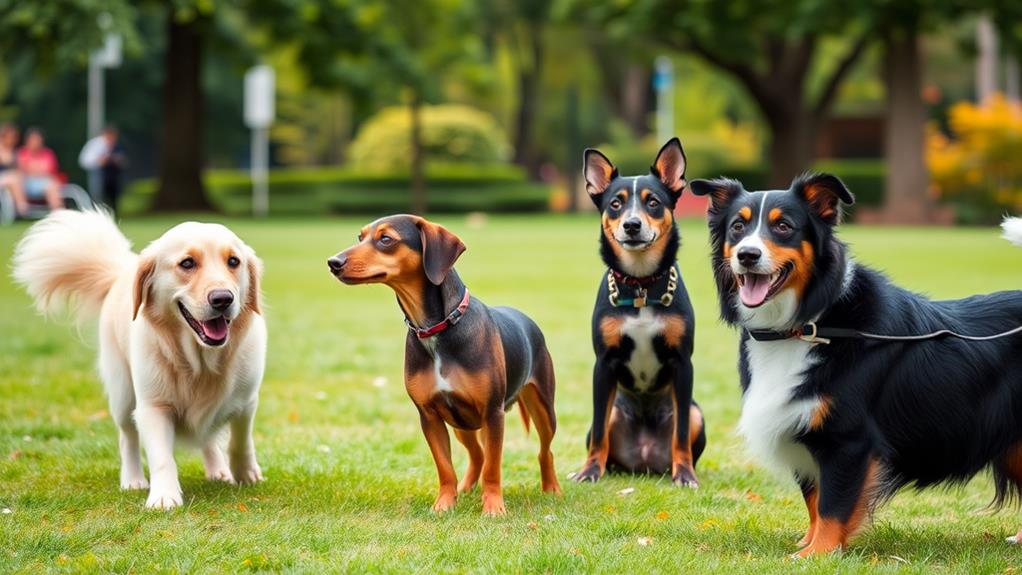Adapting training for distinct dog breeds and personalities is essential because each dog has unique traits that influence their behavior and learning style. For instance, herding breeds crave mental challenges, while some laid-back breeds may prefer a calmer approach. By recognizing these individual needs, you create a more engaging training environment. Tailoring your methods can enhance learning and strengthen your bond, leading to faster command retention and reduced behavioral issues. When you consider both breed characteristics and individual personality, your training becomes more effective and enjoyable. Discovering how to apply this knowledge can transform your training experience.
Understanding Breed Characteristics
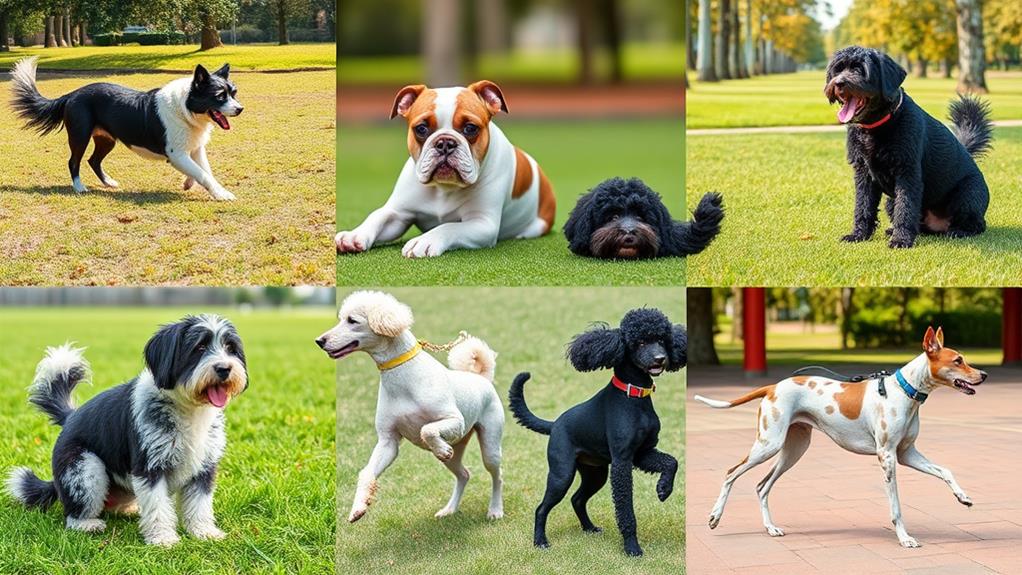
Understanding breed characteristics is crucial for effective dog training. Each dog breed comes with specific traits that influence their behavior, learning style, and motivation. For instance, herding breeds like Border Collies thrive on mental challenges and require tasks that engage their intelligence. In contrast, brachycephalic breeds, such as Bulldogs, might be more laid-back and less inclined to exert themselves in high-energy training sessions.
When you recognize these unique characteristics, you can tailor your training approach to suit your dog's needs. High-energy breeds may benefit from brisk, dynamic training sessions, while calmer breeds might respond better to slower-paced lessons that emphasize patience and consistency. Additionally, understanding the natural instincts of your dog can enhance your training effectiveness. For instance, retrievers often have a strong desire to fetch, which can be harnessed to reinforce training commands.
Adapting your methods to fit the breed's traits not only makes training more enjoyable for both you and your dog but also strengthens your bond. By acknowledging their inherent behaviors, you create a more productive training environment, making it easier for your dog to learn and thrive.
Recognizing Individual Personalities

While breed characteristics provide a general framework, recognizing individual personalities is essential for effective dog training. Every dog is unique, shaped by experiences, environment, and temperament. To train successfully, you must pay attention to these individual traits.
Start by observing your dog's behavior in various situations. Is your dog outgoing and enthusiastic to meet new people, or does it prefer to keep its distance? Understanding these nuances helps you adapt your approach. For instance, a shy dog may need gentle encouragement to build confidence, while an energetic one may thrive on more assertive training methods.
Look for specific triggers that influence your dog's mood and responsiveness. Some dogs may react strongly to loud noises or sudden movements, while others might be more resilient. Recognizing these factors allows you to create a supportive training environment tailored to your dog's needs.
Tailored Training Techniques
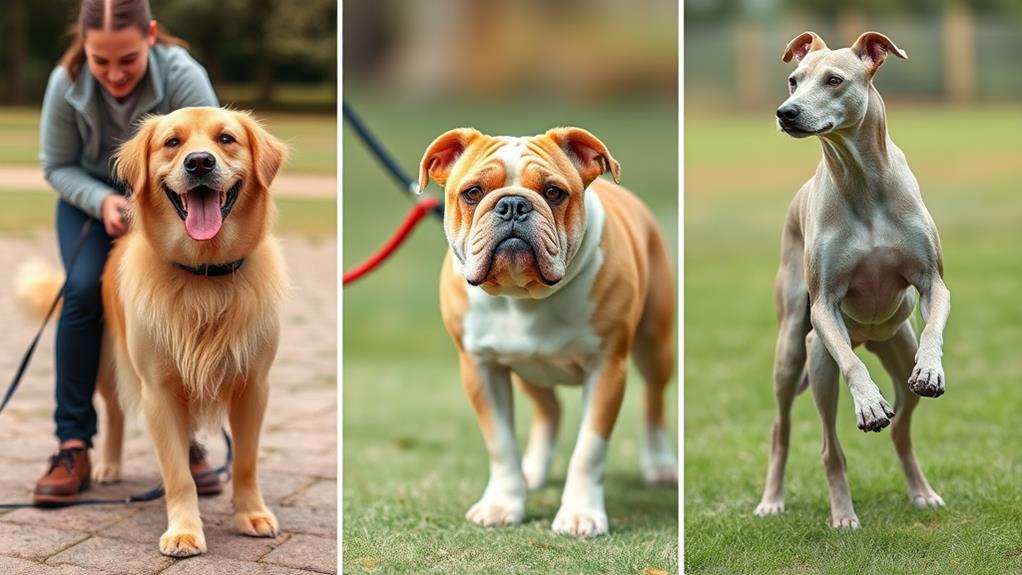
Every dog's unique personality calls for a customized approach to training. When you tailor your techniques to fit your dog's specific traits, you'll see more effective results and a happier companion.
These are some essential strategies to keep in mind:
- Use Positive Reinforcement: Reward good behavior with treats, praise, or playtime to motivate your dog.
- Adjust Training Duration: Keep sessions short and engaging, especially for breeds with shorter attention spans.
- Incorporate Play: Blend training with fun activities to maintain your dog's interest and enthusiasm.
- Be Mindful of Energy Levels: High-energy breeds may require more physical activity during training, while calmer breeds might prefer a slower pace.
- Customize Commands: Some dogs respond better to certain words or gestures; find out what resonates with your furry friend.
Benefits of Customized Approaches
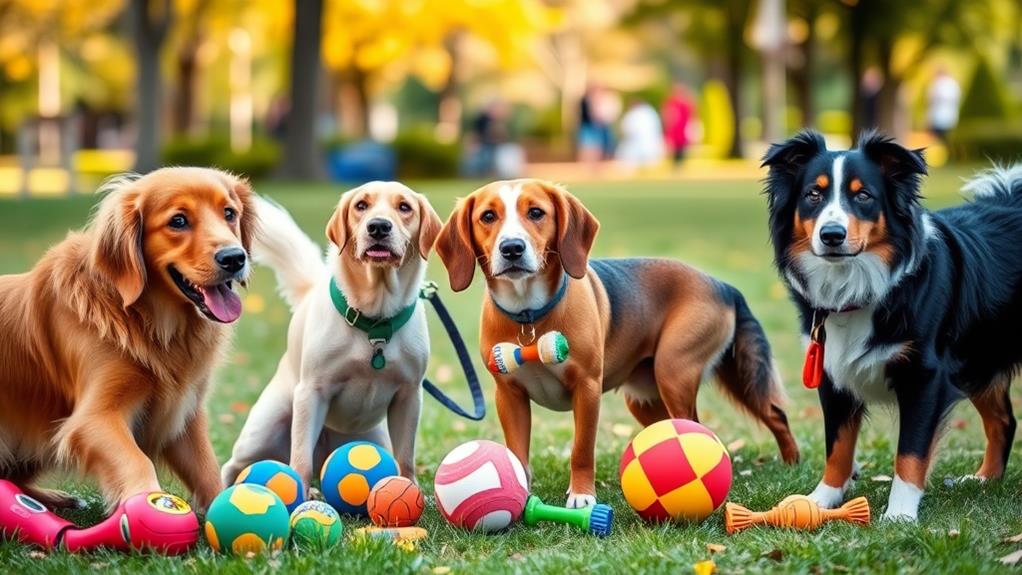
Customized approaches to dog training offer significant benefits that enhance both the learning experience and the bond between you and your pet. By tailoring training methods to your dog's unique breed, personality, and learning style, you can create a more effective and enjoyable process. This leads to quicker learning and reduces frustration for both of you.
Here's a quick overview of some key benefits you can expect from customized training:
| Benefit | Description |
|---|---|
| Improved Engagement | Your dog will be more interested when training suits their personality. |
| Enhanced Learning | Tailored methods lead to faster understanding and retention of commands. |
| Stronger Bond | Personalized training fosters trust and strengthens your relationship. |
| Reduced Behavioral Issues | Addressing specific traits can minimize unwanted behaviors more effectively. |
When you focus on your dog's individual needs, you create a more positive training atmosphere. This not only helps your pet thrive but also increases your enjoyment as a dog owner. In the end, a customized approach isn't just beneficial; it's essential for a fulfilling training experience.
Practical Tips for Dog Owners
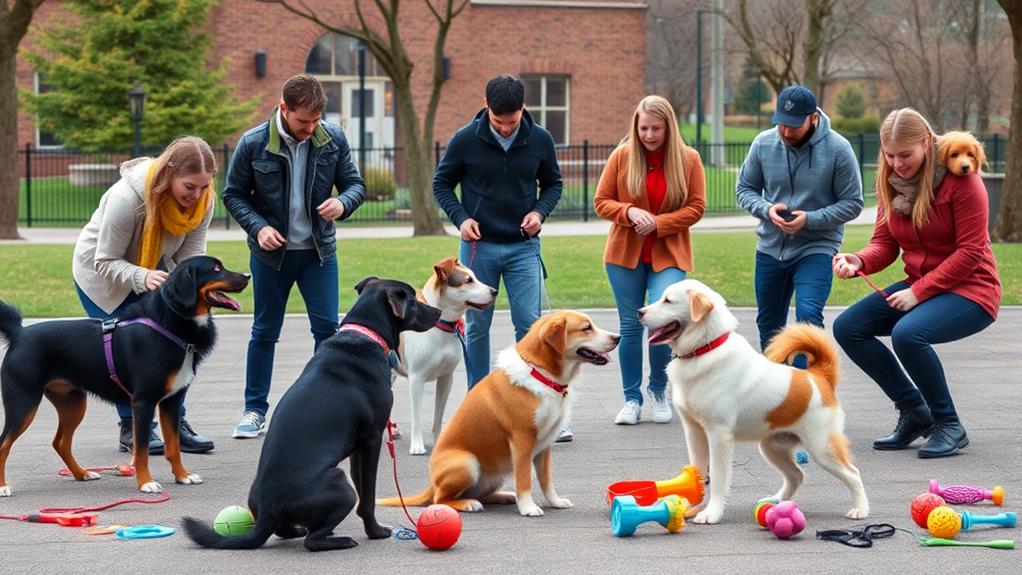
Training your dog effectively requires a few practical strategies that can make a world of difference. By understanding your dog's unique breed traits and personality, you can tailor your training to fit their needs.
Be consistent: Use the same commands and signals each time, so your dog knows what to expect.
Use positive reinforcement: Reward good behavior with treats, praise, or playtime to encourage repeat actions.
Keep sessions short: Dogs have limited attention spans. Aim for 5-10 minute training sessions to keep your dog engaged.
Stay patient: Remember, training takes time. Be patient with your dog and celebrate small victories along the way.
Adapt as needed: If something isn't working, don't hesitate to change your approach. Different breeds may require different techniques.
Frequently Asked Questions
How Do I Determine My Dog's Breed Mix for Training Purposes?
To determine your dog's breed mix, observe physical traits and behavior. Use a DNA test for accuracy. Understanding their mix helps tailor training methods that align with their unique needs and instincts, making training more effective.
Can Training Methods Vary Based on a Dog's Age?
Absolutely, training methods can vary based on your dog's age. Puppies respond better to positive reinforcement, while older dogs might need more structure. Tailoring your approach helps keep them engaged and receptive to learning.
What Role Do Genetics Play in a Dog's Behavior?
You've probably noticed how some dogs seem naturally more energetic or stubborn. Genetics play a huge role in shaping these behaviors, influencing traits like temperament and reactions, ultimately impacting how you approach training and socialization.
Are There Specific Training Certifications for Breed-Specific Trainers?
Yes, there are specific training certifications for breed-specific trainers. You can find programs focusing on particular breeds, which help you understand their unique needs and behaviors, ensuring effective and tailored training for your canine companions.
How Can I Assess My Dog's Learning Style Effectively?
Watch your dog's eyes light up when they grasp a command. Notice if they respond better to treats, toys, or praise. Experiment with different methods, and soon you'll discover their unique learning style that shines through.
Conclusion
In the world of dog training, it's like tuning a guitar; each breed and personality requires a unique adjustment to create harmony. Just as a musician wouldn't play a classical piece on a heavy metal guitar, you shouldn't use the same training methods for a Greyhound and a Bulldog. By embracing your dog's individuality and adapting your approach, you'll not only foster a stronger bond but also access their full potential, transforming training sessions into joyful experiences for both of you.

